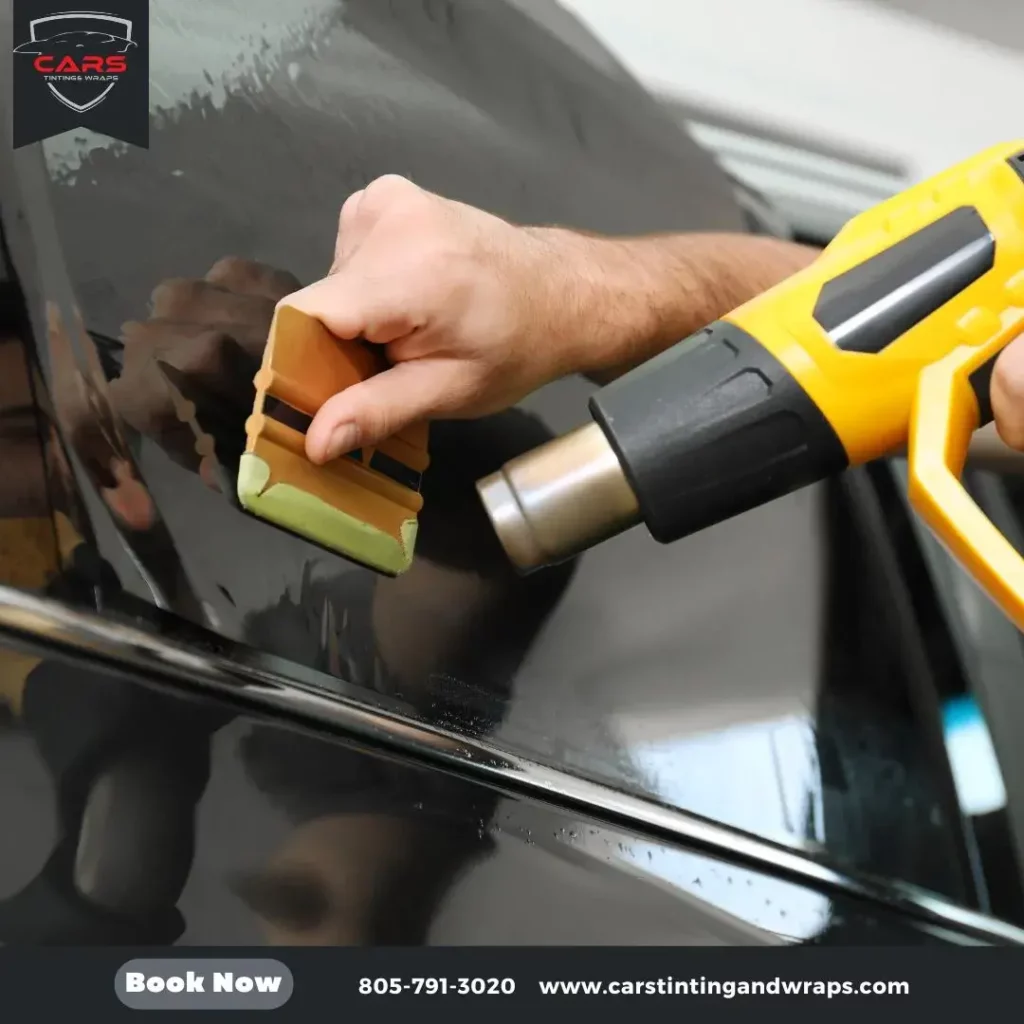
Auto glass tinting is more than just a style upgrade—it can block up to 99% of harmful UV rays, reducing the risk of skin damage and preventing interior fading. Studies show that high-quality tinting can lower interior temperatures by up to 60%, improving overall driving comfort. enhances privacy, reduces glare, and protects against harmful UV rays. Among the most popular options, ceramic and carbon tints stand out for their durability and performance. But which one is the best choice for your vehicle? This guide explores the differences between ceramic and carbon auto glass tinting to help you make an informed decision.
What is Carbon Auto Glass Tinting?
Carbon tinting is made with carbon particles that help block infrared light and reduce heat buildup inside the car. Unlike dyed films, carbon tints do not fade over time and offer improved energy efficiency.
Benefits of Carbon Tinting:
- Heat Rejection: Blocks up to 40% of infrared light, keeping the car cooler.
- UV Protection: Shields passengers and interiors from harmful UV rays.
- No Signal Interference: Unlike metalized tints, carbon does not disrupt radio, GPS, or phone signals.
- Matte Finish: Offers a sleek, stylish appearance without excessive reflection.
- Durability: Does not fade over time, making it a long-lasting option.
Drawbacks of Carbon Tinting:
- Moderate Heat Reduction: While effective, it is not as strong as ceramic tint in blocking heat.
- Cost: More expensive than dyed film but less than ceramic tint.
What is Ceramic Auto Glass Tinting?
Ceramic tinting is made with non-metallic, non-conductive ceramic particles, making it one of the highest-quality tint options available. It excels in heat rejection and UV protection, providing superior performance without interfering with electronic signals.
Benefits of Ceramic Tinting:
- Maximum Heat Rejection: Blocks up to 95% of infrared heat, significantly reducing interior temperatures.
- Superior UV Protection: Protects against 99% of harmful UV rays, reducing skin damage and interior fading.
- Crystal-Clear Visibility: Does not produce glare or distort vision at night.
- Durability: Highly resistant to scratches and does not fade over time.
- No Signal Interference: Perfect for vehicles with advanced electronic systems.
Drawbacks of Ceramic Tinting:
- Higher Cost: It is one of the most expensive tinting options available.
- Professional Installation Required: Due to its advanced composition, it should be applied by an experienced installer.
Choosing Between Ceramic and Carbon Tinting
When deciding between ceramic and carbon auto glass tinting, consider the following factors:
| Feature | Carbon Tinting | Ceramic Tinting |
|---|---|---|
| Heat Rejection | Moderate (40%) | High (95%) |
| UV Protection | High (99%) | Superior (99%) |
| Durability | Long-lasting | Extremely durable |
| Signal Interference | None | None |
| Appearance | Matte finish | Non-reflective, clear visibility |
| Cost | Moderate | High |
Both ceramic and carbon tints offer excellent benefits, but your choice should depend on factors like climate and vehicle type. For instance, ceramic tinting is ideal for hot climates due to its superior heat rejection, while carbon tinting provides a cost-effective solution for moderate climates. Additionally, if you drive a vehicle with advanced electronics, ceramic tint ensures no signal interference, making it a preferred choice for tech-heavy cars. for auto glass tinting, but the right choice depends on your needs and budget. If you want the best heat rejection, superior UV protection, and long-term durability, ceramic tinting is the ideal option. However, if you’re looking for a balance between cost and performance with a stylish matte finish, carbon tinting is a great alternative.
For the best results, consult a professional tint installer. Look for certified professionals with positive customer reviews and experience in applying high-quality tints. Ensure they provide a warranty, use industry-standard materials, and comply with local tinting regulations. Ask for before-and-after photos of previous work to assess their expertise. to ensure quality application and compliance with local tinting laws. Investing in the right tint will not only enhance your vehicle’s aesthetics but also provide long-term comfort and protection.